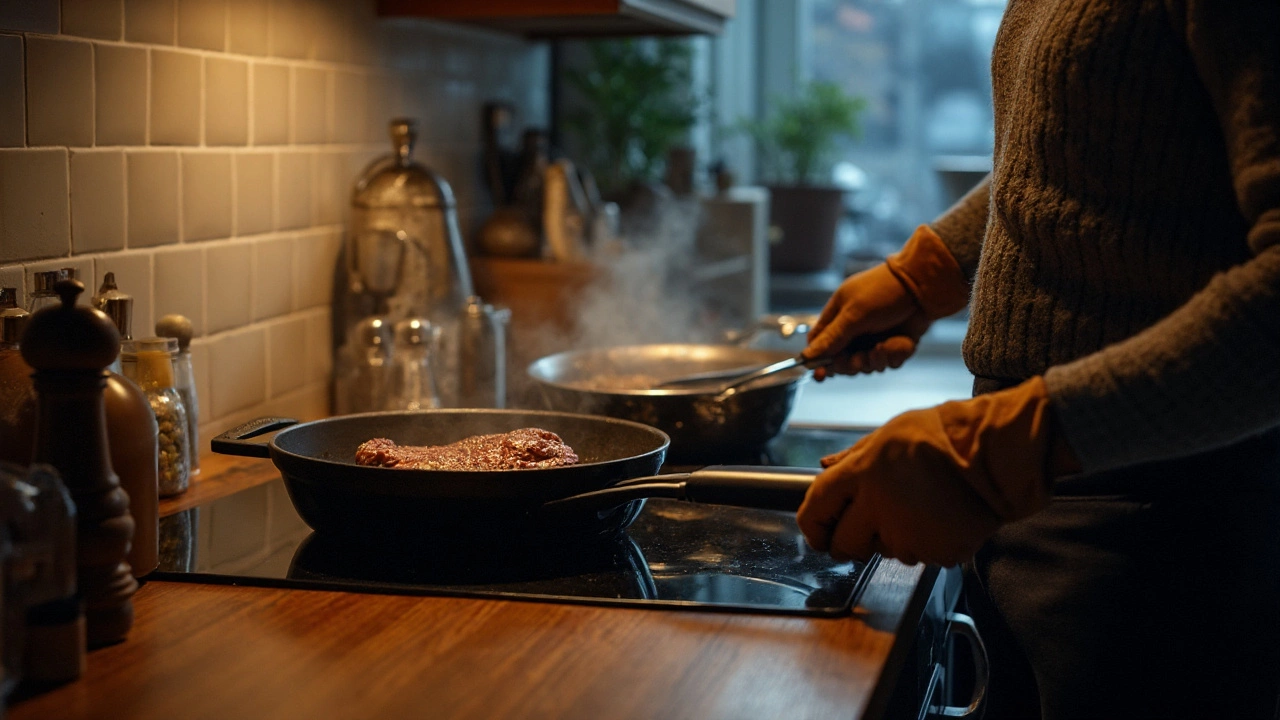Best Pan for Searing – What to Look For
If you want steak, chicken, or veggies with a caramelized crust, the pan you use matters more than you think. A good searing pan gets hot fast, stays hot, and releases food easily. Below you’ll find the three materials that actually deliver that kind of performance and how to pick the right size.
Materials that Hold Heat
Cast iron is the classic choice. It heats unevenly at first, but once it’s hot it holds temperature like a rock. That means you can toss a steak in and the surface won’t drop when the meat hits the pan. The only downside is weight – a 12‑inch cast‑iron skillet can feel like a small dumbbell. If you don’t mind the heft, season it regularly and it will develop a natural non‑stick surface that gets better with use.
Carbon steel works similarly to cast iron but is lighter and heats up a bit quicker. It also needs seasoning, but the seasoning layer builds faster because the metal is thinner. Many professional chefs prefer carbon steel for its responsiveness; you can crank the heat up, get a sizzle, and then lower it just as fast.
Stainless steel doesn’t need seasoning, but it conducts heat poorly on its own. Look for “tri-ply” or “bonded” stainless steel that sandwiches an aluminum or copper core between stainless layers. This design spreads heat more evenly, reduces hot spots, and still lets you achieve a good sear if you preheat the pan properly.
Choosing Size and Shape
For a single steak or a few chicken breasts, a 10‑ to 12‑inch pan works best. Anything larger spreads the heat too thin, and you’ll lose the crust you’re after. If you often cook for a crowd, a 14‑inch pan gives you room without sacrificing heat, but only if your stove can deliver enough power.
Flat bottoms are a must. A slightly curved base can cause food to slide toward the edges where the temperature drops. Also, avoid pans with deep rims; they trap steam and steam steams instead of sears.
When you’re ready to cook, preheat the pan for a minute or two over medium‑high heat. A few drops of water should dance and evaporate instantly – that’s the sweet spot. Add a high‑smoke‑point oil (like canola or avocado) just before the food goes in. This thin oil layer helps conduct heat and prevents sticking.
After cooking, let the pan cool before washing. For cast iron or carbon steel, wipe it clean, add a light coat of oil, and store it dry. Stainless steel can go in the dishwasher, but hand‑washing with hot, soapy water preserves the polish.
Bottom line: if you want the best sear with minimal fuss, a pre‑seasoned cast‑iron skillet is the most forgiving. If you prefer lighter weight and faster heat response, go for carbon steel. And if you hate seasoning altogether, a tri‑ply stainless steel pan will do the job as long as you give it enough time to heat up. Whichever you pick, use the right size, preheat well, and you’ll get that restaurant‑style crust at home.
Cast iron or stainless steel? Clear, evidence-backed guide to pick the right pan for searing, sauces, eggs, and everyday cooking-plus care, safety, and buying tips.
Sep, 5 2025
